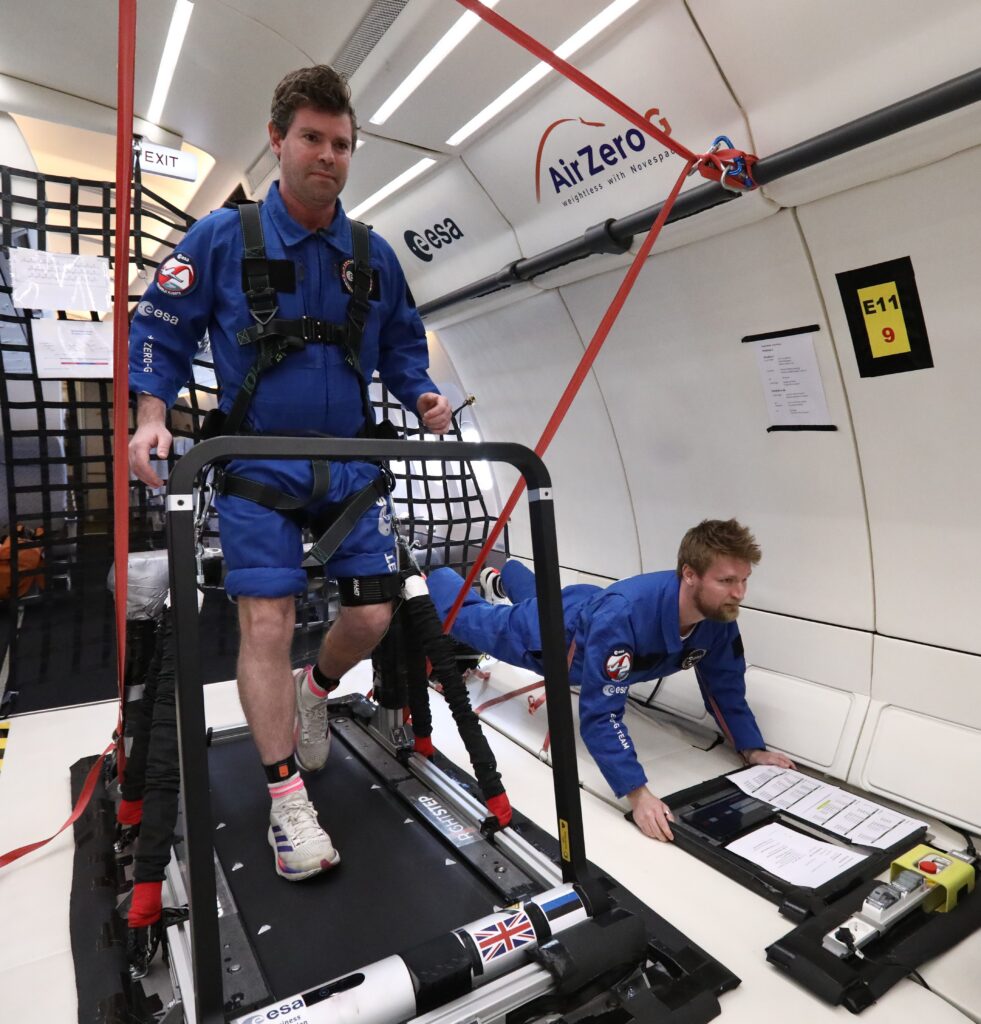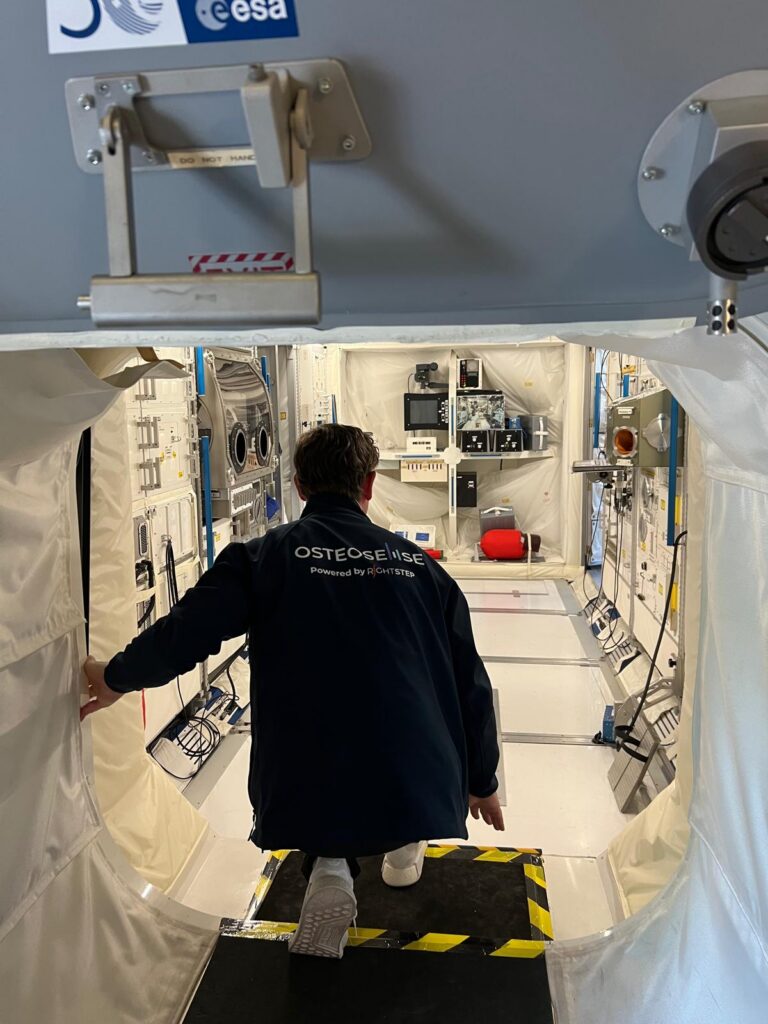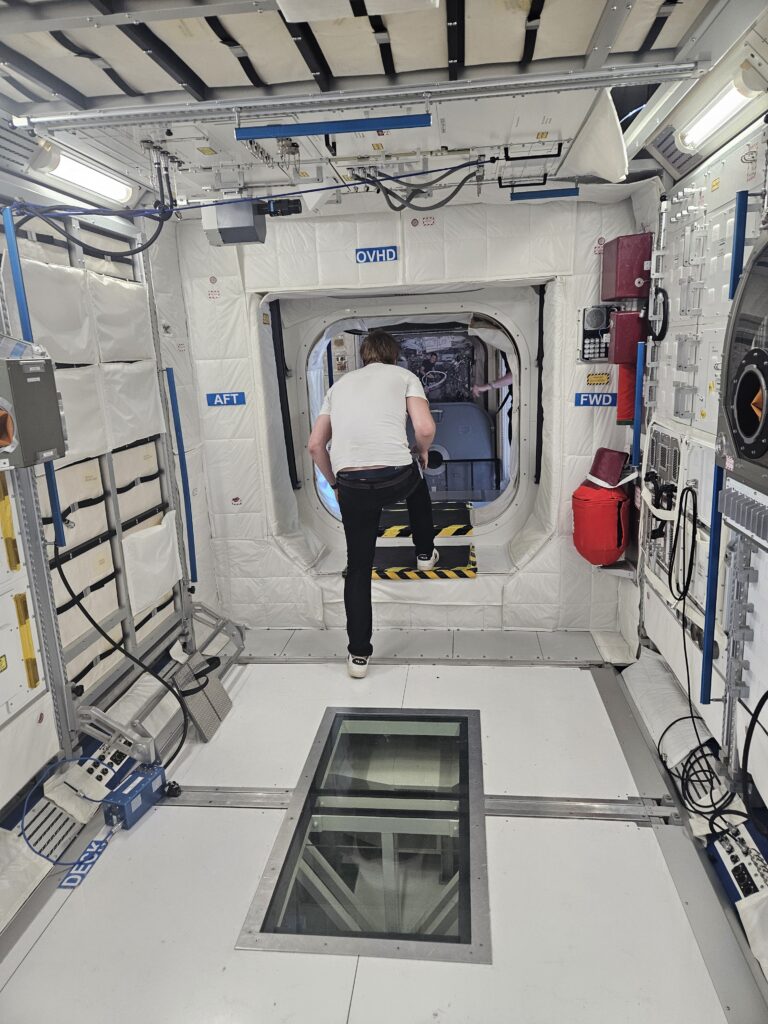What began as a side project inspired by a conversation with a professor has evolved into a space health company developing technology to protect astronauts’ bone health in space. In this interview, Mike Crooks, Co-Founder of Right Step, shares how the company’s mission took shape—from experimenting with wearable sensors to testing algorithms in zero gravity—and why Estonia and ESA BIC have been instrumental in bringing their vision to life.

How did the idea behind Right Step come about, and what problem are you solving?
The idea behind Right Step originated when I met a professor in London who was studying how physical activity affects bone remodelling in osteoporosis patients. As an engineer, I was intrigued by the mathematical algorithms he used and started experimenting with wearable accelerometers in my free time. What began as a hobby turned into a working prototype.
Together with my co-founder, Marcus, we debated whether this could become a real company. After speaking with osteoporosis patients, we realized the problem was both meaningful and complex—but difficult to tackle alone. 2022. In 2022, I moved to Estonia and, amidst the global tech layoffs and personal life changes, decided to formally launch the company in 2023.
Initially, we focused broadly on biomechanical and sensor-based applications, but the real breakthrough came when we realized astronauts suffer severe bone loss in space—up to 2% per month. That insight led us to reach out to leading bone researchers, including Dr. Laurence Vico, who became a supporter of our surrogate bone strain monitoring method.
We discovered a strong fit between our solution and space health challenges, leading us to join ESA BIC Estonia in 2024. A key milestone was testing our algorithms in zero gravity during a parabolic flight campaign, which confirmed their viability in space conditions.
Today, we’re building a remote monitoring system that helps assess astronauts’ bone strain and training efficiency, supporting both operational decision-making and long-term research. As space agencies prepare for extended missions and lunar/Martian habitats, understanding and preserving human bone health becomes increasingly critical—and that’s where we believe Right Step can play a major role.
How has your solution evolved since the early days?
In the beginning, our solution was just a single mathematical equation that we coded into a basic application. Since then, it has evolved significantly in two main directions.
First, we broke down the original algorithm into its components and began identifying additional parameters that relate to bone health. Over time, this has developed into a more comprehensive system that not only estimates bone strain but also provides broader insights into how people move and how exercise impacts skeletal health.
Second, we’ve developed multiple versions of the system tailored to different use cases. Some versions are used on Earth to support recovery after surgeries like hip or knee replacements or ACL injuries. Others are more data-rich and suited for research applications. One prototype is even designed for home use, allowing people to assess their bone health via a postal device—similar to an at-home blood test.
What we never anticipated was building something for a space station. That direction only became clear in 2024, as we better understood the needs of the space sector and began working on edge computing solutions—processing data close to the astronaut and sending back only relevant results to medical teams and researchers.
Our technology now sits at the intersection of IoT and human physiology in space, and we see great value in bridging engineering and physiology to build systems that help people stay healthy in extreme environments.

How do you identify your company today? Are you more of a space tech company or a health tech company?
We’ve wrestled with this question constantly. Right now, we define ourselves as a space health company—our primary focus is on developing health-related technologies for use in the space sector, specifically to support astronaut wellbeing.
While our technology has potential healthcare applications on Earth, we believe it’s not yet the right time to introduce it into clinical settings. The techniques we use are new, and healthcare systems are often too overwhelmed to adopt experimental solutions quickly.
Our long-term vision is to bring the knowledge and tools we develop for space into healthcare when the timing and environment are right. But for the foreseeable future, we remain a space company focused on solving physiological challenges in space.
You recently opened a testing lab. Can you tell me a little more about that—what can people do there, and who is welcome?
Yes—we’ve opened a testing lab in collaboration with TalTech, and it plays a key role in both our development work and community engagement. The lab isn’t built for commercial profit; it’s designed to bring together our technologies, support student learning, and encourage collaboration across disciplines.
The idea emerged during my time in the Estonian Research Council’s SekMo program, where I worked with Professor Jeff Tuhtan from TalTech to develop sensor-based tools for monitoring joint and bone health. Student interest quickly grew—many wanted to apply their coursework skills to real projects. So, we made our software freely available to them, which led to successful student-led projects and greater involvement.
This inspired us to create a physical space where students—whether undergraduates, Master’s, or PhD—can experiment with our tools, such as the treadmill used during parabolic flight and our sensor systems. The lab is also open to the broader community: we’ve already welcomed athletes like football and tennis players for biomechanical assessments.
We’ve partnered with hardware providers from Finland and the Netherlands who contribute equipment and expertise. Beyond students and athletes, we’re engaging with other TalTech departments—like security and digital health—to foster interdisciplinary innovation. Long-term, we hope the lab supports the growth of Estonia’s space and health tech ecosystem and helps retain local talent by giving them real opportunities here.
For me, it’s also personal—Estonia has given me a home, a family, and the chance to build something meaningful. This lab is one way I can give back.

How has your experience with ESA BIC Estonia and Tartu Science Park shaped Right Step’s development?
Our time with ESA BIC Estonia—and their base at Tartu Science Park—has been transformative. Though we weren’t physically based in Tartu, the program gave us full access to workshops, mentorship, and connections across Estonia’s space and startup community. As foreign founders, it also helped us navigate the local ecosystem.
What stood out was ESA BIC’s commercial focus: beyond developing technology, we were encouraged to explore market positioning, customer needs, and sales—areas where many tech incubators fall short. That orientation led us to prioritize understanding “who will buy this” before polishing our product.
Their flexibility was invaluable—when a parabolic flight opportunity emerged mid-program, ESA BIC allowed us to reallocate budget, aligning with our evolving needs. Thanks to their guidance and support, by mid-2024 we were already planning ahead, winning multiple grants to secure funding through 2026. We entered incubation with uncertainty—and came out with a clear pipeline and reduced financial stress.
We’re deeply grateful to key figures like our mentor Stefano Alberico (Skudo OÜ) and Katrin Kiviselg and local ecosystem builders like Golbraik Space and of course the Estonian Space Office. Their energy, collaboration, and genuine belief in our work—from our space health vision to building at TalTech—have been fundamental. Together, they’ve helped Right Step grow from a hobby project into a mission-driven space health company ready for zero-gravity applications.
____________________________________
Background information:
ESA BIC Estonia, led by Tartu Science Park in collaboration with Tehnopol, is part of the European Space Agency’s network of business incubators across Europe. It helps innovative Estonian startups bring space technologies to new markets, offering up to 60,000€ in product development support, specialised mentoring, international network access, and business development loans.
